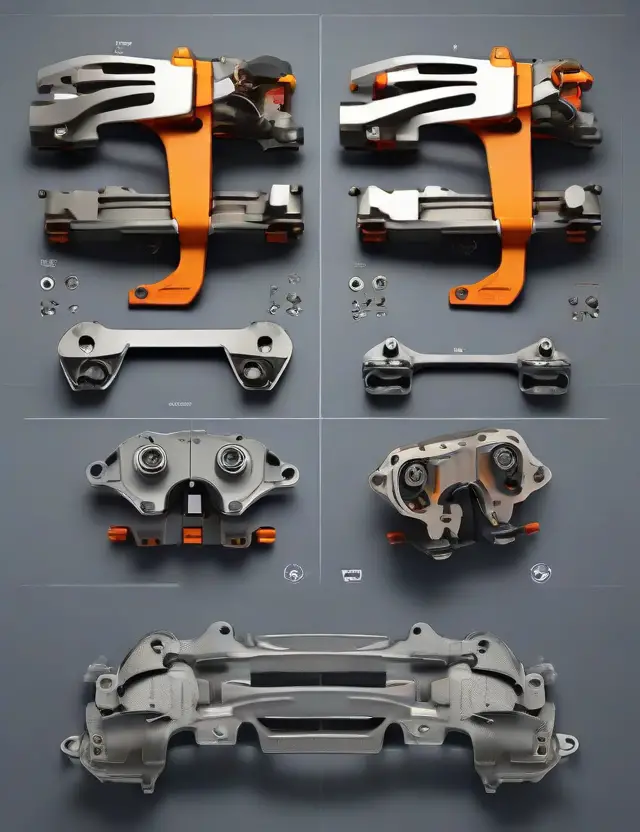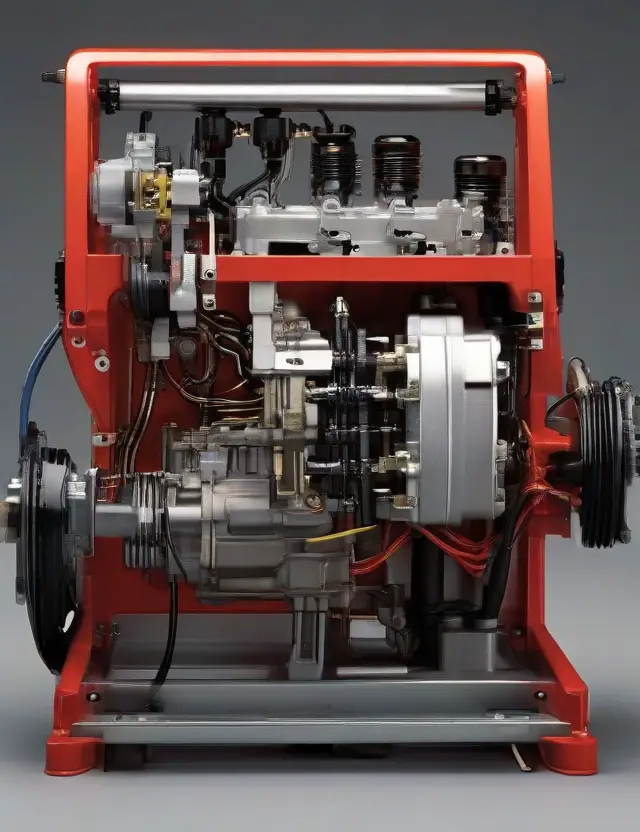Advanced Brake System Technology For Cars And Trucks
Brakes are undoubtedly one of the most important safety features in any vehicle. In the past, brake systems were simple and fairly basic, but as technology has progressed, so too have braking methods in modern cars and trucks. Over the years, technological advancements have made brake systems more efficient, safer, and more reliable.
The evolution of brake technology has led to the development of advanced braking systems that are much more effective and reliable than ever before. With improved designs, materials, and electronics, the brake systems installed in cars and trucks today are far superior and more efficient than they were even 10 years ago. This article will explore the advancements in brake technology and the benefits of having advanced brake systems in your vehicle.
Table of Contents
What is Advanced Brake System Technology?

Advanced brake system technology is a type of braking system that utilizes more than just traditional friction brakes. These systems are designed to improve the safety, control, and reliability of a vehicle’s braking performance. This technology can be used in cars and trucks, although it may be configured differently depending on the application.
Advanced brake systems generally feature multiple actuators that work together to reduce stopping distances, increase control and stability, and provide a more consistent brake response. They can also help reduce driver fatigue by allowing the driver to operate the brakes with less physical effort.
Types of ABS
The most common components of advanced brake systems are electronic sensors, ABS (anti-lock braking systems), EBD (electronic brake force distribution), BA (brake assist), and traction control.

ABS (Anti-Lock Braking Systems)
ABS, or anti-lock braking systems, is an important part of advanced brake system technology. This system keeps the wheels from locking up while the vehicle is decelerating. ABS uses sensors that measure wheel speed and detect when any of them is starting to lock up.
When this happens, the computer in the vehicle will automatically activate the brakes on each wheel individually to reduce the risk of skidding or sliding.
EBD (Electronic Brake Force Distribution)
EBD, or electronic brake force distribution, is another advanced brake system technology component. This system ensures that the correct braking pressure is applied to each wheel. Depending on how hard the brakes are applied and the vehicle’s speed, EBD can adjust the amount of braking force applied to each wheel. This helps to prevent skidding or spinning out and ensures a balanced stopping performance.
BA (Brake Assist)
Brake assist is a feature that is often included in advanced brake systems. This system can detect when a driver is making an emergency stop and applies additional braking pressure to help reduce stopping distances. This system can be lifesaving in emergencies and can make a huge difference in overall safety.
Traction Control
Traction control is another beneficial feature included in advanced brake systems. This system helps to reduce wheel spin during acceleration by using the brakes on each wheel individually. It does this by activating the brakes when one or more wheels start to slip, which helps to reduce the chances of skidding or sliding.
Benefits of Advanced Brake System Technology
Advanced brake system technology has revolutionized the automotive industry, providing drivers with unprecedented safety and control. By incorporating cutting-edge technologies such as regenerative braking, adaptive cruise control, electronic brakeforce distribution, and anti-lock brakes, modern vehicles have become safer, more reliable, and easier to maneuver.
The primary benefit of advanced brake system technology is improved safety. Using multiple actuators and sensors, these systems can detect potential problems and apply the brakes much more quickly than traditional brakes to reduce stopping distances. This helps to prevent skidding or spinning out of control, which can often result in serious accidents.

Advanced brake systems also improve control and stability while driving. These systems allow drivers to feel more confident behind the wheel as they can better maintain traction and control the vehicle even in challenging road conditions.
Furthermore, drivers used to manual brakes will find that advanced brake systems require much less physical effort, allowing them to drive more comfortably without feeling fatigued.
Choosing the Right Advanced Brake System for Your Vehicle
Choosing the Right Advanced Brake System for Your VehicleWhen it comes to ensuring the safety of your vehicle, having the right brake system is crucial. With advancements in technology, there are a variety of options available for advanced brake systems for cars and trucks. But with so many choices, how do you know which one is the right fit for your vehicle? The first step is to understand the different types of advanced brake systems available.

This includes anti-lock braking systems (ABS), electronic brake force distribution (EBD), and brake assist systems (BAS). Each of these systems has its unique features and benefits, making them suitable for different types of vehicles and driving conditions. Next, consider the driving conditions you typically encounter.
Do you often drive in heavy traffic or on hilly terrain? Are you a frequent traveler on highways or do you mostly stick to city roads? These factors can help determine which type of advanced brake system will best suit your needs. Another important factor to consider is the type of vehicle you have. Cars and trucks have different weight distributions and different handling capabilities, which can affect the performance of the brake system.
It’s essential to choose a system that is specifically designed for your vehicle to ensure optimal performance. Additionally, it’s important to consider your budget and the cost of maintenance for each type of advanced brake system. While some systems may have a higher initial cost, they may require less maintenance in the long run, making them a more cost-effective option.
It’s also worth noting that advanced brake systems not only enhance safety but also improve the overall driving experience. They provide better control and stability, allowing for smoother and more confident driving. So, investing in the right advanced brake system for your vehicle is not only a matter of safety but also a matter of comfort and convenience.
In conclusion, choosing the right advanced brake system for your vehicle requires careful consideration of various factors such as the type of system, driving conditions, vehicle type, and budget. It’s important to do your research and consult with a professional to determine the best option for your specific needs. With the right advanced brake system, you can have peace of mind knowing you have the best possible protection and performance for your vehicle.
Factors to consider when choosing an advanced brake system
When it comes to choosing an advanced brake system for your car or truck, there are several factors to consider. First and foremost, safety should be your top priority. Look for systems that offer advanced features such as anti-lock braking and electronic stability control.
Additionally, consider the driving you do and choose a system that caters to your specific needs, whether it’s city commuting or off-roading. Finally, don’t forget to research the reliability and reputation of the system’s manufacturer. With the right advanced brake system technology, you can ensure a safe and smooth driving experience for years to come.
Expert recommendations for different types of vehicles
Advanced Brake System Technology: Expert Recommendations for Cars and TrucksWhen it comes to advanced brake system technology for cars and trucks, there are a plethora of options available in the market. However, choosing the right one for your vehicle can be overwhelming. That’s why we turned to the experts for their recommendations.
According to them, for cars, a combination of electronic stability control and anti-lock braking systems is the way to go. For trucks, they suggest opting for a hydraulic braking system with electronic brake force distribution. Whichever option you choose, make sure to consult with a professional to ensure the best fit for your vehicle.
Maintenance and Care for Advanced Brake Systems
When it comes to the safety and performance of your vehicle, the brakes are an essential component that should never be overlooked. With the advancements in automotive technology, brake systems have also evolved to provide better efficiency and control. Advanced brake systems for cars and trucks utilize cutting-edge technology and materials to enhance braking power and response time.
To ensure the longevity and effectiveness of your advanced brake system, regular maintenance and care is crucial. This includes regularly checking the brake pads for wear and tear, as well as monitoring the brake fluid levels. It is also important to have your brake system inspected by a professional mechanic at least once a year or more frequently if you notice any unusual noises or vibrations while braking.
One of the key features of advanced brake systems is the use of electronic sensors and computer-controlled components. This allows for more precise and responsive braking, as the system can quickly adjust to changing road conditions. However, this also means that any issues with these electronic components can greatly impact the performance of your brakes.
That’s why it’s important to have these sensors and systems regularly checked and replaced if necessary. Another important aspect of maintaining advanced brake systems is proper driving habits. Aggressive driving, such as harsh braking and sudden stops, can put unnecessary strain on the brake system and lead to premature wear and tear.
By practicing smooth and gradual braking, you can not only prolong the life of your brakes but also improve fuel efficiency. In addition to regular maintenance and driving habits, it is also important to use high-quality brake components and fluids. This will ensure that your advanced brake system is operating at its best and provides optimal performance and safety.
Advanced brake systems for cars and trucks have revolutionized the way we brake, providing better control and safety on the road. However, these systems require proper maintenance and care to continue functioning at their best. By following these tips, you can ensure the longevity and effectiveness of your advanced brake system, providing you with a smooth and safe driving experience for years to come.

Proper maintenance techniques to prolong the life of advanced brake systems
Proper maintenance is crucial for the optimal performance and longevity of advanced brake systems in cars and trucks. These advanced systems rely on cutting-edge technology to provide efficient and safe braking. To ensure their proper functioning, it is important to follow manufacturer-recommended maintenance practices such as regular brake fluid flushes, inspections, and timely replacements of worn-out parts.
Neglecting maintenance can lead to costly repairs and compromise the safety of your vehicle. So, stay on top of your brake system maintenance to enjoy a smooth and safe driving experience.”
Common issues and how to troubleshoot them
Advanced brake system technology has greatly improved the driving experience for car and truck owners. However, like any other technology, it can face some common issues. One such issue is brake failure, which can be caused by air in the brake lines or worn-out brake pads.
Another issue could be a malfunctioning ABS, which could be due to a faulty sensor or electrical issue. These problems can be easily troubleshooted by regular maintenance and timely replacement of worn-out parts. So, stay safe and enjoy the benefits of advanced brake technology!
Frequently Asked Questions [FAQs]
1. What Is A Smart Brake System?
A smart brake system is an advanced technology that improves safety, comfort, and performance. It utilizes sensors, processors, and actuators to monitor vehicle speed, road surface conditions, and driver input for an optimized braking response.
Smart brake systems can detect when the brakes are applied and then adjust the force applied to the brakes to optimize stopping power on wet or icy roads. Additionally, smart brake systems can provide a more comfortable braking experience by reducing the effort the driver needs.
2. How Does ABS Work?
ABS (anti-lock braking system) is an advanced technology that prevents wheel lockup while the vehicle decelerates. It uses sensors to detect when any of the wheels are starting to lock up and activate the brakes on that particular wheel.
This helps to prevent skidding and ensures a balanced stopping performance. Additionally, ABS can help reduce stopping distances, significantly improving safety when driving in wet or icy conditions.
3. What Type Of Brake System Is Used In Trucks?
Trucks with air brakes utilize compressed air rather than hydraulic fluid and can use drum brakes, disc brakes, or a combination of both. The air is pressurized through a compressor that is installed on the engine.
4. What Type Of Brakes Are Best For Trucks?
Semi-metallic brake pads are known for their durability, heat resistance, and gentle impact on brake rotors. They are typically more affordable than ceramic brake pads and are ideal for heavy vehicles and high-performance cars due to their impressive braking abilities.
5. Which Brake System Is Used For Heavy Vehicles?
Air brakes are commonly utilized in heavy commercial vehicles because of their dependable nature. They offer several benefits for large multi-trailer cars, such as an unlimited air supply that ensures the brake system never runs out of its operating fluid, which can occur with hydraulic brakes. Additionally, minor leaks do not cause brake failures.
Conclusion
Advanced brake system technology has come a long way in recent years and is standard in most modern cars and trucks. Not only does this technology make braking more efficient, it also helps to improve overall safety and control while driving. The different components of advanced brake systems work together to improve drivers’ performance, stability, and control in all conditions.
